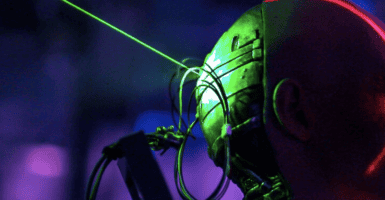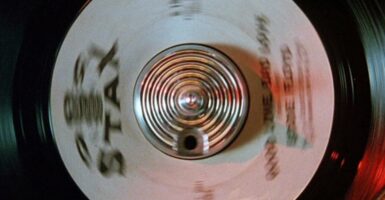Blood Plus Acid Equals Embryonic Stem Cells
This article is more than 2 years old
 When I first caught a glimpse of this story, I totally thought (and hoped) it was about the magic of LSD, but alas, we’re talking about an acidic solution, rather than a psychotropic one. Still, this is pretty trippy. By that, I mean awesome. Biologists from Japan’s RIKEN Center for Developmental Biology have found a new, potentially paradigm-shifting way of creating embryonic stem cells.
When I first caught a glimpse of this story, I totally thought (and hoped) it was about the magic of LSD, but alas, we’re talking about an acidic solution, rather than a psychotropic one. Still, this is pretty trippy. By that, I mean awesome. Biologists from Japan’s RIKEN Center for Developmental Biology have found a new, potentially paradigm-shifting way of creating embryonic stem cells.
Embryonic stem cells are known as pluripotent cells because of their ability to generate any and all types of cells found in the body. They can become skin, neurons, or cells in the heart or any other organ. Their versatility makes them invaluable when it comes to treatment for a myriad of diseases. By contrast, adult stem cells only produce certain kinds and numbers of cells, and are thus less potent—multipotent, rather than pluripotent. The problem with embryonic stem cells it that scientists have to destroy human embryos to harvest these stem cells, and that’s a controversial topic.
President Clinton favored the use of federal funding for embryonic stem cell research. No ban on stem cell research has ever existed in the U.S., though in 2001 George W. Bush restricted the number of embryonic stem cell lines available for research, causing states such as California set aside their own funds for research. Only non-embryonic stem cell research based on stem cell lines existed until 2009, when President Obama removed Bush’s restrictions. This new technique takes the controversy out of embryonic stem cell development and harvesting because it creates these pluripotent cells from a single blood cell.
These new findings, published in Nature, detail the process of putting white blood cells taken from a baby mouse into a mildly acidic solution, and then waiting for pluripotent cells to generate. The team built on a Nobel Prize-winning breakthrough from 2007 by their RIKEN colleagues that involved manipulating a cell’s genes to generate human stem cells from skin and blood. Genetic manipulation can be tricky, and this latest innovation circumvents the need by simplifying the process, changing the cell’s environment, rather than the cell’s genetic code.
The team subjected blood cells from very young mice—just one week old—to a variety of treatments, including heat, compression, and starvation, before finding the one that worked the best. Ultimately, the pH of the winning solution was just 5.7, which is a bit more acidic than saliva or milk, but not quite as acidic as coffee. After 30 minutes in this mildly acidic bath, it took a few days for the blood cells to act like stem cells, and when the team injected them into a mouse embryo, they did exactly what they were supposed to do, they created all the mouse organs any little mouse could want.
The next step is to try and replicate the experiment with blood from adult mice. Eventually, researchers would test it in human cells, though there are some miles to go before that happens. Still, this is a huge breakthrough in pluripotent stem cell generation that could herald new treatments for Alzheimer’s, Parkinson’s, diabetes, and many more. Google will be calling soon, seeing whether these pluripotent cells can cure death.
The video below shows a heart beating in a mouse embryo that was injected with the blood-generated pluripotent cells.












